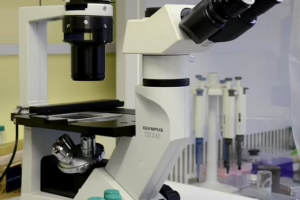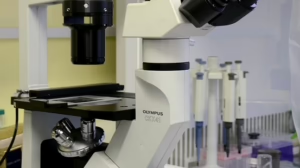Unraveling the Mysteries: The Incredible World of Human Cells
Introduction
The human body is an exceptional and intricate masterpiece of biological engineering, comprised of trillions of tiny units known as cells. These cellular units serve as the fundamental building blocks of life, each performing specialized roles that contribute to the organism’s overall functionality. In this article, we will embark on a journey through the microscopic world of human cells, exploring their structure, types, functions, and the remarkable processes that support life.
1. The Structure of Human Cells
1.1 The Cell Membrane
At the core of every cell is the cell membrane, a phospholipid bilayer that encloses the cellular components while regulating the entry and exit of substances. This semi-permeable barrier allows nutrients to enter and waste products to exit the cell, ensuring homeostasis. Proteins embedded within the membrane act as receptors, channels, and enzymes, facilitating communication and transport.
1.2 Cytoplasm and Organelles
Nestled within the cell membrane is the cytoplasm, a gel-like substance that houses various organelles, each performing distinct functions. The cytoplasm provides a medium for biochemical reactions and supports the structure of the cell.
-
Nucleus: Often referred to as the cell’s control center, the nucleus contains genetic material (DNA) organized into chromosomes. It is responsible for regulating cell functions and gene expression.
-
Mitochondria: Dubbed the "powerhouse" of the cell, mitochondria convert nutrients into adenosine triphosphate (ATP) through cellular respiration, providing energy for cellular activities.
-
Ribosomes: These small structures are essential for protein synthesis. They can be found free-floating in the cytoplasm or attached to the endoplasmic reticulum.
-
Endoplasmic Reticulum (ER): This organelle is divided into rough (with ribosomes) and smooth types. The rough ER is involved in protein synthesis and modification, while the smooth ER is associated with lipid synthesis and detoxification.
-
Golgi Apparatus: The Golgi apparatus modifies and packages proteins and lipids for secretion or delivery to other organelles.
- Lysosomes and Peroxisomes: Lysosomes contain digestive enzymes that break down waste materials, while peroxisomes are involved in lipid metabolism and the detoxification of harmful substances.
1.3 The Cytoskeleton
The cytoskeleton provides structural support to the cell, facilitates movement, and plays a key role in intracellular transport. It is composed of three main types of filaments: microfilaments, intermediate filaments, and microtubules. These structures enable the cell to maintain its shape, anchor organelles, and facilitate cell division.
2. Types of Human Cells
Human cells can be classified into several categories based on their structure, function, and specialization. Below, we outline the major types of human cells.
2.1 Somatic Cells
Somatic cells encompass the majority of the human body’s cells, including those that form tissues and organs. Unlike gametes (sperm and egg cells), somatic cells are diploid, meaning they contain two sets of chromosomes—one from each parent.
2.1.1 Epithelial Cells
Epithelial cells form protective layers that cover surfaces and line cavities. They play vital roles in absorption, secretion, and sensation. There are various subtypes of epithelial cells, including squamous, cuboidal, and columnar cells, each tailored for specific functions.
2.1.2 Muscle Cells
Muscle cells are specialized for contraction and movement. There are three types of muscle tissue: skeletal, cardiac, and smooth. Skeletal muscle cells are under voluntary control, while cardiac and smooth muscle cells operate involuntarily.
2.1.3 Connective Tissue Cells
Connective tissues provide support, bind organs, and store energy. Numerous types of cells fall under this category, such as fibroblasts, adipocytes, and osteocytes. These cells contribute to the extracellular matrix, offering structural integrity and nutrient support.
2.2 Germ Cells
Germ cells are involved in reproduction and are haploid, containing only one set of chromosomes. They give rise to sperm and egg cells through a process known as meiosis, allowing for genetic diversity in offspring.
3. The Life Cycle of a Cell
3.1 Cell Division
Cell division is a fundamental process that allows organisms to grow, repair tissues, and reproduce. There are two primary forms of cell division: mitosis and meiosis.
3.1.1 Mitosis
Mitosis is the process by which somatic cells divide to produce two identical daughter cells. It is vital for growth, tissue repair, and asexual reproduction in some organisms. Mitosis consists of several phases:
-
Prophase: Chromosomes condense and become visible. The nuclear membrane breaks down.
-
Metaphase: Chromosomes align at the cell’s equatorial plane.
-
Anaphase: Sister chromatids are pulled apart by spindle fibers toward opposite poles of the cell.
- Telophase: The nuclear membrane re-forms around each set of chromosomes, and the cell begins to divide.
3.1.2 Meiosis
Meiosis is a specialized form of cell division that produces gametes. It involves two rounds of division, resulting in four genetically diverse haploid cells. Meiosis is crucial for sexual reproduction, contributing to genetic variation through processes such as crossing over and independent assortment.
3.2 Apoptosis
Apoptosis, or programmed cell death, is a natural and essential process that eliminates damaged or unnecessary cells. Unlike necrosis, which results from injury or infection, apoptosis is a controlled and energy-dependent process that plays a critical role in development, maintenance of tissue homeostasis, and the immune response.
4. Cellular Communication and Signaling
Cells communicate with each other through a variety of signaling pathways and mechanisms. This communication is vital for coordinating complex processes such as growth, development, and immune responses.
4.1 Cell Signaling Pathways
Cell signaling pathways can be broadly classified into two categories: intracellular and extracellular signaling.
4.1.1 Intracellular Signaling
Within a cell, signaling molecules (such as hormones and neurotransmitters) can activate signal transduction pathways, leading to changes in gene expression or cellular function. These pathways often involve a cascade of phosphorylation reactions mediated by kinases.
4.1.2 Extracellular Signaling
Cells can also communicate through extracellular signals, such as hormones or cytokines, that travel through the bloodstream or interstitial fluid to reach target cells. Receptors on target cells bind to these signals, eliciting specific responses.
4.2 Gap Junctions and Plasmodesmata
Direct cell-to-cell communication can occur through structures known as gap junctions in animal cells and plasmodesmata in plant cells. These channels allow small molecules and ions to pass directly from one cell to another, facilitating rapid communication and coordination.
5. The Role of Stem Cells
Stem cells are unique cells with the ability to differentiate into various cell types and self-renew. They play a crucial role in development, growth, and tissue repair.
5.1 Types of Stem Cells
Stem cells can be categorized into two main types: embryonic stem cells and adult stem cells.
5.1.1 Embryonic Stem Cells
Embryonic stem cells are pluripotent, meaning they can develop into any cell type in the body. They are derived from early-stage embryos and hold tremendous potential for regenerative medicine and tissue engineering.
5.1.2 Adult Stem Cells
Adult stem cells are multipotent and are found in various tissues throughout the body. They serve as a repair system, replenishing damaged or dying cells. Examples include hematopoietic stem cells, which give rise to blood cells, and mesenchymal stem cells, which can differentiate into bone, cartilage, and fat cells.
5.2 Stem Cell Research and Therapeutics
Stem cell research has garnered immense interest for its potential applications in regenerative medicine and clinical therapies. Challenges remain, including ethical considerations surrounding embryonic stem cells and the need for effective differentiation protocols.
6. The Impact of Lifestyle on Cellular Health
Cellular health is influenced by various lifestyle factors, including nutrition, exercise, stress, and environmental exposures. Maintaining healthy cells is essential for overall well-being and longevity.
6.1 Nutrition and Cells
A balanced diet rich in essential nutrients supports cellular health by providing the necessary building blocks for cellular repair and function. Antioxidants, vitamins, and minerals play crucial roles in mitigating oxidative stress and promoting cellular resilience.
6.2 Exercise and Cellular Function
Regular physical activity has been shown to enhance cellular function, promoting mitochondrial biogenesis and reducing inflammation. Exercise can improve cardiovascular health, boost immune function, and even influence gene expression.
6.3 Stress and Cellular Aging
Chronic stress can have detrimental effects on cellular health by inducing inflammation, promoting oxidative damage, and accelerating the aging process. Strategies to manage stress, such as mindfulness and exercise, can help support cellular health.
6.4 Environmental Exposures
Exposure to harmful environmental factors, such as pollutants and toxins, can negatively impact cellular health, leading to cellular damage and disease. Minimizing exposure and promoting a clean environment are vital for maintaining healthy cells.
7. The Future of Cell Biology
The field of cell biology is continuously evolving, driven by advances in technology and research methodologies. Innovations such as CRISPR gene editing, single-cell sequencing, and advanced imaging techniques allow scientists to explore the complexities of cellular structures and functions in unprecedented detail.
7.1 Personalized Medicine and Cellular Therapies
As our understanding of cellular biology deepens, the potential for personalized medicine based on individual cellular characteristics grows. Tailoring treatments based on a person’s genetic makeup and cellular profile may lead to more effective and targeted therapies.
7.2 Regenerative Medicine
The application of stem cell research and tissue engineering holds promise for regenerative medicine, potentially enabling the repair or replacement of damaged tissues and organs. Research in this area could revolutionize how we approach diseases and injuries.
7.3 The Quest for Longevity
Understanding the mechanisms underlying cellular aging may yield insights into extending healthy lifespan. Researchers are exploring ways to target cellular senescence and enhance the body’s inherent repair mechanisms, paving the way for potential anti-aging interventions.
Conclusion
In summary, human cells are remarkable entities that serve as the foundation for life. Understanding their structure, functions, and complexities unlocks significant insights into health and disease. As we continue to explore the incredible world of human cells, we are continually reminded of the exquisite intricacies of biology and the potential for future breakthroughs in medicine and science.
References
- Alberts, B., et al. Molecular Biology of the Cell. 6th ed. Garland Science, 2014.
- Lodish, H., et al. Molecular Cell Biology. 8th ed. W.H. Freeman and Company, 2016.
- Campbell, N. A., & Reece, J. B. Biology. 10th ed. Pearson Education, 2014.
- Kahn, C. R. et al. “Stem Cells: Science and Therapeutics.” Cell Stem Cell, vol. 19, no. 1, Aug. 2016, pp. 1-4.
- D’Angelo, G., et al. “The Role of Nutrition in Cellular Health.” Nutrition Reviews, vol. 75, no. 5, Apr. 2017, pp. 319-332.
- Anderson, A. R. A., et al. “Biorobotics: The Promise of Cell Biology Can Be Too.” Nature Reviews Molecular Cell Biology, vol. 19, no. 2, Mar. 2018, pp. 102-112.
This article provides a comprehensive overview of human cells, covering their structure, functions, and roles in health and disease, while also touching on the impact of modern scientific advancements.


























Add Comment